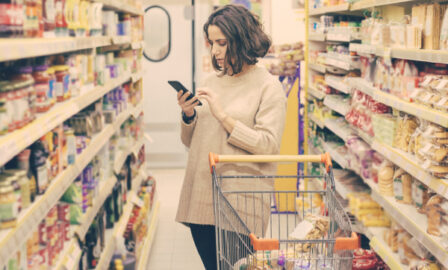Consumer Food Trends: Tapping into Personalized Foods
With the assistance of data and technology, food and beverage companies are looking at capitalizing on consumer food trends as a way to boost sales and gain market share. Nearly every food company has been turning to personalization as a way to increase market opportunities. In the food and beverage space, there are particularly exciting growth opportunities for brands willing to involve consumers in the design and functionality of their products. Moving into 2018 and beyond, the trend of product personalization shows no indication of slowing within the food and beverage market. Indeed, as Mintel observes, “A new era in personalization is dawning due to the expansion of online and mobile food shopping.” And as consumers (and their medical providers) become increasingly tuned in to the health effects of diet while becoming ever more pressed for time, food and beverage companies may be able to increase profit margins by leveraging this intersection in some creative ways.
Why Personalization?
Part of what drives the growing market for product personalization is the continued rise of the educated consumer. Technological access to near-infinite information and buying choices empowers even the average consumer to enjoy a position of power. Just-food predicts personalization as one of the consumer food trends will continue to grow through 2018, disrupting the status quo of packaged foods companies across manufacturing, marketing, and throughout the supply chain.
For several years, brands with annual sales of less than $1 billion have been outpacing many larger ones in several packaged goods categories such as dairy, snacks, and ready meals. Due in part to the modern consumer’s desire for healthier ingredients and greater authenticity, this shift has required larger brands to rethink their marketing strategies. For some large brands, such as Coca-Cola, one successful strategy has been to enter the smaller brand market by acquisition—e.g. Honest Tea and Odwalla. But as companies deepen their understanding of the current cultural demand for earnest, authentic, health-centered brands, consumer goods companies are also responding to a broad cultural demand for personalization. Personalization offers novelty and appeals to the consumer’s desire for input and control. Thus, customized and personalized consumer goods have been steadily gaining more shares in the current product market and present an interesting opportunity for large brands to compete with their smaller counterparts.
Meal Delivery Kits Tailor to Consumers’ Values
The meal kit space is a great example of the increasing personalization in the food and beverage sector. Meal kits have been trending since 2011, when HelloFresh and Plated launched their meal kit delivery services, followed quickly by Blue Apron in 2012. By December 2016, nearly one-third of adults had ordered a meal delivery kit online according to Acosta Sales & Marketing, while meal kits brought in up to $1.5 billion in U.S. sales in 2016. Now, the market holds over one hundred meal kit providers and counting. And after Amazon’s acquisition of Whole Foods, it has entered the meal kit game through AmazonFresh, partnering with AllRecipes to offer same-day meal kit delivery.
As the online meal kit delivery segment is set to grow—with estimates predicting up to 1.3% of food and beverage sales by 2020—brick and mortar supermarkets have recently begun striking back; Publix, Kroger, and The Fresh Market now sell meal kits from their store locations.
As consumers—especially millennial urbanites—place an increasingly higher premium on time savings, value, and health, the meal delivery boom makes sense. Meal kits not only provide convenience by saving lengthy trips to the grocery store and reducing food waste, but their pre-measured format also offers the consumer a measure of built-in portion control. And according to Nielsen’s Global Health and Ingredient Sentiment Survey, 70% of global respondents said they make dietary decisions based on personal health concerns (e.g. obesity, diabetes and high cholesterol), and “while total fast-moving consumer goods (FMCG) sales volume has been flat over the past four years, sales of products with health and wellness claims are outpacing total category growth by a significant margin in many categories.” In addition, according to FoodLogiQ, due to this next generation of consumers’ increased awareness of recalls, allergens, chemically-processed foods, and unfair labor practices, there is a movement toward authenticity in all things related to the food and beverage arena.
Opportunities Abound
These consumer food trends, specifically meal kit delivery, is a huge opportunity area for traditional food and beverage manufacturers. Food and beverage companies can partner with retailers and online meal kit companies to deliver a variety of value-added contributions to this trend. Providing recipes, adjusting packaging configurations to enable single-meal use, and launching new products designed to comply with meal kit objectives can all help food and beverage manufacturers capitalize on this growth opportunity.
Companies must continue to bear in mind the risks of personalization and mass-customization, including consumer alienation and brand dilution. But stakeholders should expect to see a lot of change during the next several years in the food and beverage industry as right-for-me marketing keeps everyone on their toes.
If you have found this information on consumer food trends valuable and would like to receive future insights about the retail industry, subscribe to our insights below.



